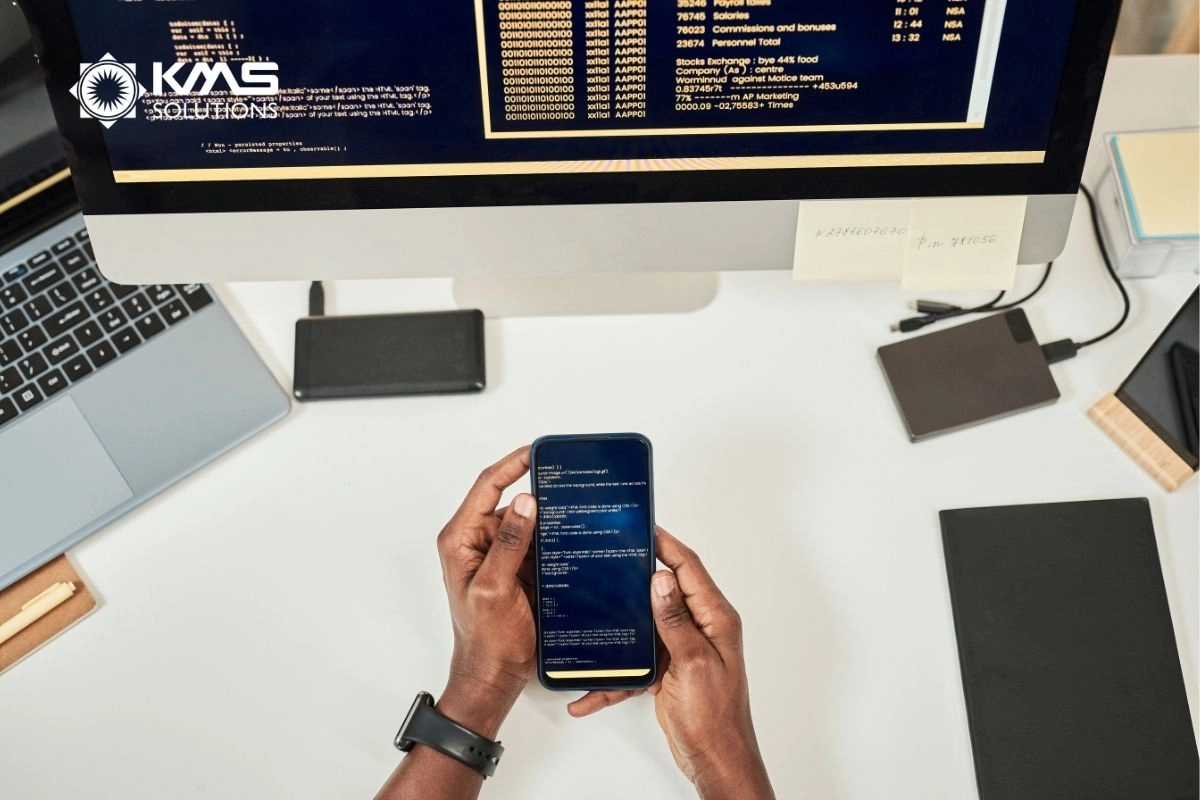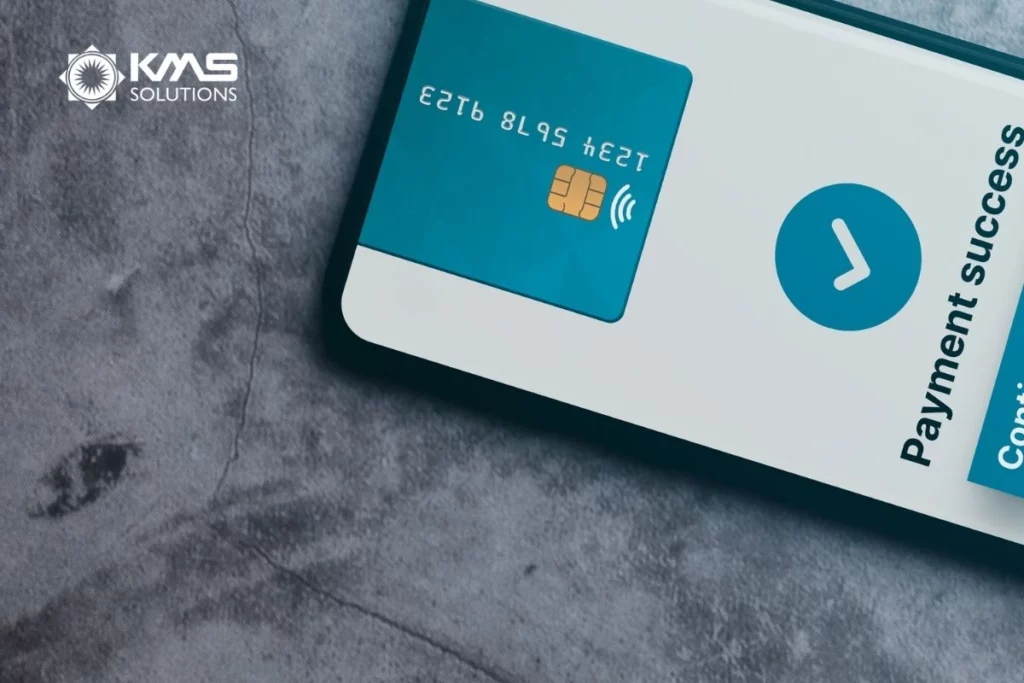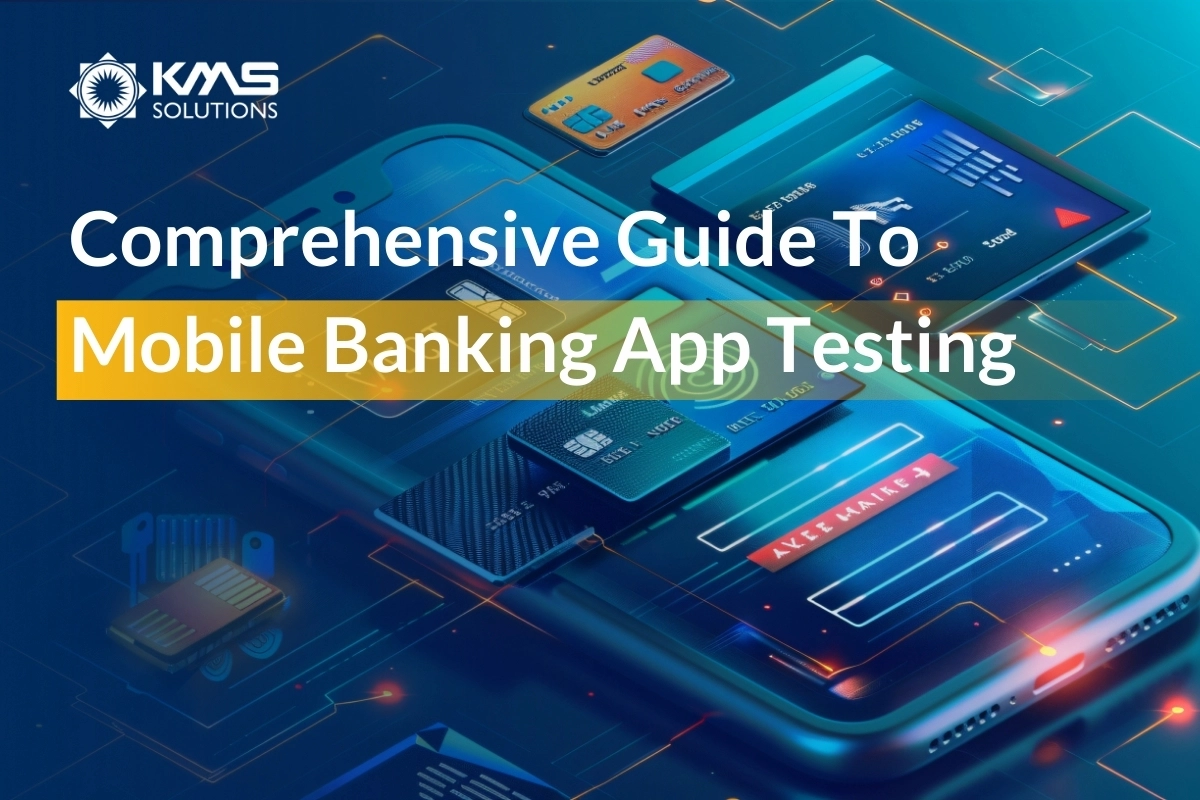According to Statista’s research, the number of individuals actively using mobile and online banking services is anticipated to reach approximately 2.5 billion by 2024, with the Asian market being the largest. For the majority of online banking users, banking apps are a constant companion, from transferring money and checking account balances to trading stocks.
However, since the banking app deals with sensitive information, it becomes the primary target for cybercriminal attacks. In this regard, it’s apparent that thorough testing plays an essential role in the Cost to Develop a Banking App cycle, where omissions or gaps are unacceptable. Thus, enterprises that work in the finance and fintech industry need to concentrate on the enterprise software testing phase in order to eliminate data breaches, loss of funds, and other felonies.
This article will outline the key aspects of banking testing, including a checklist of strategies and best practices that help KMS Solutions perform mobile banking app testing more effectively.
1. Why is it Important to Test Mobile Banking Apps?

Since banking apps contain confidential information from users, they are especially susceptible to hacking:
- The Synopsys Cybersecurity Research Center indicated that among 107 surveyed banking apps, 88% contained some known vulnerability. On average, each banking app was riddled with 55 security flaws.
- According to the Cost of a Data Breach Report, in 2021, banking industries suffered $5.72 million on average in losses directly related to data breaches from banking apps.
Obviously, financial software is a common target for hackers, and businesses that work in the banking sector need to be on the constant lookout for security threats. Testing the mobile banking app is worth considering since it allows the development team to foresee and proactively manage security and performance issues. Some benefits of banking app testing include:
- Complying with continuously changing regulations: Every year, there’re new and broadened certain norms, standards, and regulations imposed to ensure personal information protection and security. Compliance testing is compulsory for banking apps as a single violation of laws can lead to enormous penalties and operation suspension.
- Ensuring sensitive data is protected: When it comes to banking, there’s no margin for error. Data loss or leakage can be caused by defectively performing software or slow fraud detection. Thus, constantly testing the app can help identify and prevent potentially fraudulent actions immediately.
- Improving digital user experience and customer retention: People often have a low tolerance for flawed apps; this is especially true for banking-related products. Banking apps that have bugs or performance issues may decelerate or negatively influence users’ work and financial management. Thus, before releasing a product, thorough testing allows enterprises to gain customer trust and strengthen your relationship with them via a stabler and smoother experience.
2. Essential Types of Mobile Banking Application
The specific nature of banking apps lies in complicated internal logic and structure that requires the development team to handle various features and ensure their users’ security. Since error-prone products can severely affect the banks’ reputation, it’s crucial to monitor the tool’s performance, evaluate it against realistic benchmarks, and tweak it as needed.
To provide a high-quality banking app, QA experts need to cover different types of mobile banking app:
Functional Testing: Validating Core Features

Functional testing guarantees that all aspects of the mobile banking app perform exactly as expected. This type of testing covers the app’s core functionalities, such as account management, transaction processing, and balance inquiries.
When a user initiates a fund transfer, the app should correctly deduct the amount from the sender’s account and credit it to the recipient’s account without any errors. Functional testing involves various scenarios, including normal operations and edge cases, to verify that all aspects of the app are functioning correctly and reliably.

Security testing in mobile banking app testing is a crucial process that involves evaluating the app’s security measures to ensure that sensitive user data and financial information are protected against potential threats. For example, ethical hackers might attempt to breach the app to uncover any potential vulnerabilities. To ensure the banking app remains secured, it’s essential to perform mobile app security testing, API security testing, and penetration testing.
Read more: Penetration Testing: Protecting Your Mobile App from Cyber Threats
Usability Testing: Enhancing User Experience
Usability testing focuses on the app’s user interface and overall user experience. It assesses how intuitive and easy to navigate the app is for users. Evaluators monitor how users engage with the application to detect usability problems, including unclear navigation, non-reactive buttons, or convoluted procedures.
Performance Testing: Ensuring Reliability

Performance testing asseseasy to navigateanking app’s behavior and responsiveness under different scenarios and workloads. This encompasses performance testing, stress analysis, and resilience testing.
Performance testing also measures response times, transaction speeds, and overall system stability, ensuring the app performs optimally even during high traffic periods.
Compliance Testing: Adhering to Regulatory Requirements
Compliance testing validates that the mobile banking app meets all necessary regulatory and legal obligations.
For instance, in Europe, the app must comply with GDPR (General Data Protection Regulation), which governhigh-trafficcy and protection. Compliance testing ensures that the app’s data handling, storage, and processing practices meet these regulations.
3. Essential Tools for Mobile Banking App Testing

So, what tools do developers rely on to confirm their apps meet the highest standards?
Automated Testing Tools
Automated testing tools enhance the efficiency of mobile banking app evaluations by carrying out preset tests independently, eliminating the necessity for manual input. Tools like Appium, Selenium, Katalon, and Kobiton are popular for their ability to run repetitive tests quickly and accurately.
KMS Solutions is a robust partner of Katalon and Kobiton, leveraging these tools to provide comprehensive testing solutions for mobile banking apps. As a trusted partner, KMS Solutions offers expertise in setting up and managing automated testing frameworks that is specifically tailored for banks and financial institutions. The company empowers BFSI organizations to accelerate the testing cycle and broaden coverage, ensuring that their mobile banking apps meet the highest standards of quality, security, and performance.
Manual Testing Tools
Despite the rise of automation, manual testing remains essential for aspects that require human judgment and creativity. Exploratory testing involves testers examining the app without pre-established test cases to uncover unforeseen problems.
Take TestRail as an example, it allows testers to create, manage, and track test cases and test runs, providing a comprehensive overview of the testing process.
Performance Monitoring Tools
Performance monitoring tools such as New Relic, Dynatrace, and LoadRunner help safeguard the app’s performance and remain optimal under various conditions. These tools monitor metrics like response times, transaction speeds, and system load in real time.
Security Testing Software
OWASP ZAP, Burp Suite, and Nessus are popular security testing tools. Automated scans are conducted to identify potential threats like SQL injection, cross-site scripting (XSS), and unsafe data storage.
4. How to test a mobile banking app
Testing a mobile banking app requires following these steps below:
Step 1: Defining Test Objectives: Charting the Course for Success

You might have heard about defining purposes several times since it is the foundation of any testing process. Your objectives might include verifying the app’s security and navigation, ensuring smooth transaction processes, checking for compliance with financial regulations, and assessing the overall user experience.
Note: Clearly defined objectives provide a roadmap for the mobile banking application testing process, helping you stay focused and measure success accurately.
Step 2. Developing Test Cases: Designing a Comprehensive Plan

Once your objectives are clear, the next step is to create detailed test cases. Each test case should outline the specific conditions, inputs, actions, and expected outcomes.
Additionally, to design comprehensive test cases for banking apps, clarity is necessary. For ease and effectiveness, you can enumerate requirements by functionality modules – money transfer, account management, payment, investment, etc. For ease and effectiveness, you can enumerate requirements by functionality modules – money transfer, account management, payment, investment, etc.
Step 3. Selecting Testing Tools: Enhancing Your Testing Capabilities

Selecting the right testing tools can impact efficient and effective testing. There are various tools available for different aspects of testing, such as functional testing, performance testing, and security testing.
We recommend using Katalon and Kobiton for their advanced features that streamline the automation of banking app testing. Katalon provides a comprehensive platform that supports web, API, and mobile testing while Kobiton, on the other hand, excels in mobile testing with real device cloud access. Its real-time testing capabilities and detailed performance metrics help identify issues quickly and accurately.
Note: Choose tools that align with your objectives and integrate well with your development environment to streamline the testing process.
Step 4. Executing Test Cases: Precision in Action

With test cases and tools in place, it’s time to execute the test cases. This step involves running the app in different scenarios and environments to validate its functionality, performance, and security.
QA managers or team leaders must classify test cases for automation and build custom scripts accordingly. Some particular features will require manual testing, in which case a sufficiently skilled team must be assigned. Moreover, test cases need to cover all aspects of apps.
Note: Record any defects or issues encountered during testing and prioritize them based on their severity.
- ✅ Functional testing: QA team must ensure the implemented functions of the mobile app, such as money transfers, account management, etc., are working properly.
- ✅ Database testing: The user database must be flawlessly accurate and regularly updated, while the system supporting these activities must be tested for robust, scrupulous operation. Standard testing modules include data types, data speed (loading and storage), predetermined functions, and more.
- ✅ Security testing: When creating test scenarios, banks must prioritize this step above all others. As previously mentioned, banking apps deal with the most sensitive customer data, which must be scrupulously protected against breaches, hacks, and other malicious attacks. As part of security testing, data encryption efficiency and user authentication are assessed. In addition, testers need to ensure potential data breaches or leaks are automatically reported.
Some standard features to be verified comprise:
- Are the authentication mechanisms such as User ID, Password, OTP, encrypted PINs, etc., working correctly?
- Are the “Forget Username” or “Forget Password” functions based on solid validation facilities to recover lost credentials?
- Are the password creation rules sophisticated enough?
- Is there a lack of client-side encryption for sensitive data?
- Does the app use the secured HTTPS protocol in the development environment?
✅ Cross-device testing: It’s essential to keep in mind that your banking app can be accessed through various mobile devices and operating systems. To make sure the app’s features are run as expected on multiple device-OS combinations, testing on real devices and operating systems is worth considering.
Kobiton’s real device testing platform allows you to perform all the needed gestures to test on a real device. By going beyond emulators, this enterprise software testing solution provides banks with the most insight into the real customer experience and defines possible errors that may affect severely to their journey.
✅ Performance testing: This phase comprises evaluating page loading times, testing the app’s performance under peak load conditions, and checking the product’s responsivity for distinct browsers and devices.
✅ Usability testing: All the cutting-edge features will be less critical when customers are unable to navigate the app with fluidity. So, the testing team should concentrate on the app’s prototype to understand user acceptance standards.
5. Common Challenges in Mobile Banking App Testing
Mobile banking app testing comes with unique challenges.
Addressing Device Fragmentation

Device Fragmentation refers to the vast array of mobile devices available, each with different screen sizes, operating system versions, hardware configurations, and network capabilities. This diversity creates a complex environment for testing mobile apps.
- Device Variety: There are over 24,000 distinct Android devices in the market, each with unique specifications.
- OS Versions: Users often don’t upgrade to the latest OS version immediately. For instance, as of early 2023, around 20% of Android users were still using versions older than Android 9.0 Pie.
Strategies to Address Device Fragmentation
- Emulators and Simulators: While real device testing is crucial, emulators and simulators can help quickly cover more device configurations and are useful for initial mobile banking application testing phases. Emulators replicate device hardware, while simulators mimic the software environment.
Managing Network Variability

Mobile banking apps must perform reliably across different network conditions, including varying speeds and intermittent connectivity. Users may experience dropped connections or move between network types (e.g., from Wi-Fi to mobile data) during a session, which can disrupt app performance.
Strategies to Manage Network Variability
- Network Simulation Tools: Use tools like Network Link Conditioner or Charles Proxy to simulate different network conditions. This allows testers to evaluate how the app performs under various scenarios, such as slow networks, high latency, or fluctuating connectivity.
- Offline Functionality: Design the app to handle offline scenarios gracefully. For instance, allow users to complete certain actions offline and sync data once connectivity is restored.
Ensuring Cross-Platform Compatibility

Cross-platform compatibility is essential for reaching a broad user base, as mobile banking apps need to work seamlessly on both iOS and Android platforms. For example, Android devices have a wide range of screen sizes and resolutions, while iOS devices are more standardized but have specific design guidelines set by Apple.
Strategies to Ensure Cross-Platform Compatibility
- Thorough Testing on Both Platforms: Ensure that testing covers both iOS and Android platforms comprehensively. This includes functional testing, performance testing, and user interface testing.
6. Sample Use Cases and Best Practices for Mobile Banking App Testing

As mobile banking apps generally have the same features, there’re common cases QA experts usually comprise in a test suite:
- Verify whether a user can log in using valid credentials: Check whether the app has a restoration mechanism in case customers fail to enter the data in the required fields.
- Make sure customers can perform transactions: The banking app must facilitate transactions between the users’ credit cards and between their accounts and another account.
- Verify that users can change passwords: A QA expert needs to guarantee that app users can securely adjust their login credentials. The development team should provide a safe way to save and update personal information.
- Ensure the account is temporarily blocked after multiple failed login attempts: Focus group has to test the app’s security by blocking unauthorized access. However, they should consider the way to restore a blocked account in a fast yet non-compromising way.
Along with the widely-accepted standards and procedures, here are some best practices derived from various projects’ experiences, native and cross-platform, that can help banks not only ensure app quality at each stage of development but also save time.
1. Start with reviewing requirements and design
When receiving tasks for app development, your QA team should initially analyze the completeness, precision, and consistency of the requirements. By thoroughly understanding the banking app’s logic, you can accelerate the enterprise software testing process and minimize possible errors.
In parallel to the requirements review, it’s vital to concentrate on the app’s design to ensure that it encompasses all app states while preventing any inconsistencies between various platforms. Ensuring the consistency between requirements and design is worth considering.
2. Apply component test for new features
You can run detailed component tests, which are the same as model-based tests, in case a new feature is released. The test should be performed based on the previously written test cases and checklist to ensure all the entry points, as well as the interaction of the new feature with others, are working appropriately.
3. Use automation testing
Manual testing has become more time-consuming and ineffective since the banking app features and demand for security have constantly increased. For this reason, test automation is highly suggested for long-term projects, and banking apps typically belong to this kind. In addition, banking apps contain a number of complicated logic with repeated actions that are suitable for automated testing. For instance, to test regular payment processes with many required fields, you just need to design test scripts at the beginning and let them run automatically.
Test automation tools can ensure the quality and velocity of the enterprise software testing process, resulting in faster time-to-market of products. Some widely-used automated testing tools that help accelerate your testing performance and provide higher ROI can be named Selenium, Katalon, Appium, etc.
7. KMS Solutions in Mobile Banking App Testing
As cyberattacks are happening every day, error-prone apps may put customers of the banking system at risk and jeopardize their financial assets. Hence, thorough testing is compulsory for mobile banking apps since they handle enormous volumes of confidential data. Above all, banks and financial institutions need to make sure that app users can perform their financial activities safely and effectively.
KMS Solutions is one of the businesses offering comprehensive mobile banking app testing services. They leverage advanced testing methodologies and tools, such as the Katalon Automation Testing tool, to enhance test coverage and efficiency. By equipping teams with the necessary knowledge and expertise, KMS Solutions helps several banks boost their testing performance, effectively handling the growing number of mobile users.
Their expertise in mobile banking app testing is designed to accelerate delivery times and ensure robust performance, security, and compliance with international standards. KMS Solutions’ approach includes functional testing, performance testing, security testing, and usability testing.
8. FAQs Section
1. What are the most common issues identified during mobile banking app testing?
Common issues identified during mobile banking app testing include security vulnerabilities, performance bottlenecks, compatibility problems across different devices and operating systems, UI/UX design flaws, transaction errors, and failures in handling edge cases or unexpected user behaviors.
2. How can I test the app's performance under varying network conditions?
Performance is tested using network simulation tools to create different conditions (3G, 4G, 5G, Wi-Fi), load testing for heavy traffic, stress testing for extreme conditions, and real-world testing in diverse geographic locations.
3. How to handle testing for different types of transactions in a mobile banking app?
Testing involves creating comprehensive test plans for various transactions, using automated scripts for consistency, testing edge cases, and conducting end-to-end testing to ensure accurate processing.
4. When should mobile banking app testing be conducted in the development lifecycle?
Mobile Banking App Testing should be conducted throughout the entire development lifecycle. This includes early stages (unit testing and integration testing), middle stages (system testing and security testing), and later stages (acceptance testing and performance testing).








